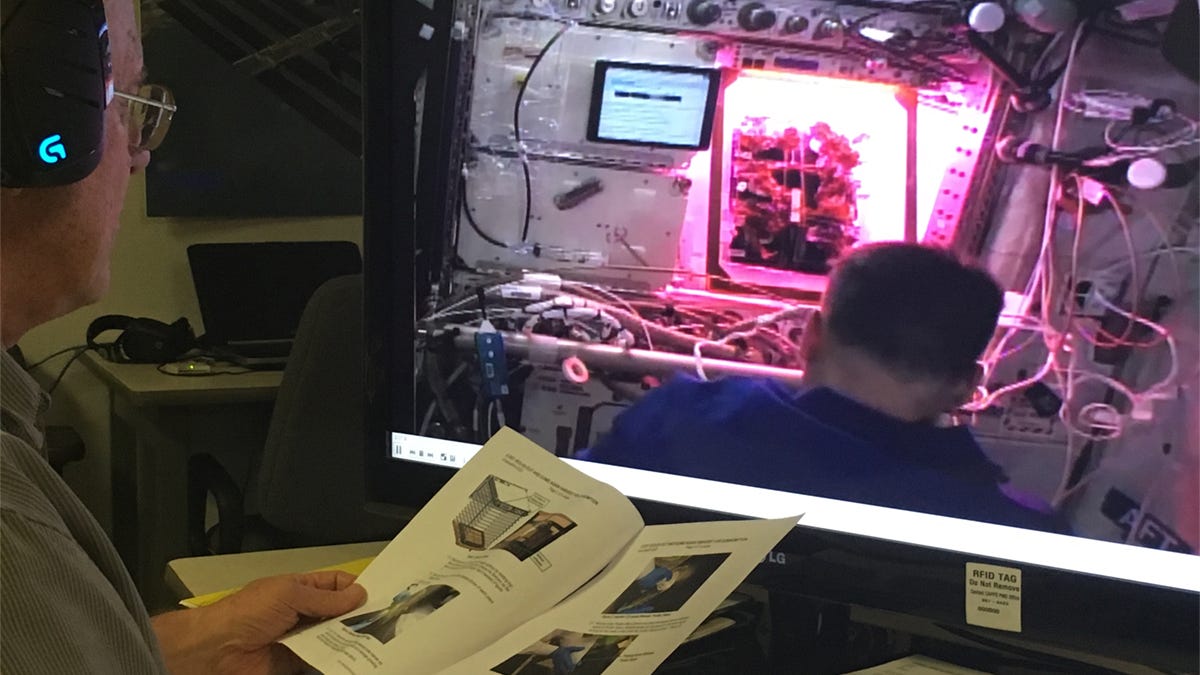Space lettuce is now officially on the ISS menu
Astronaut Shane Kimbrough has eaten the first of four space lettuce harvests after the leaf vegetable was proven safe in 2015.
The humble lettuce is still the subject of ongoing experimentation in microgravity. Over the last few years, astronauts aboard the International Space Station have been trying to determine if the vegetable is a viable source of fresh food that can be grown and eaten in space.
First, the series of experiments determined that yes, you can absolutely grow lettuce in the microgravity environment of the ISS. The next step was to determine if the lettuce was safe for consumption; having done so, Expedition 45 crewmembers Scott Kelly, Kjell Lindgren and Kimiya Yui consumed the "Outredgeous" red romaine lettuce in August 2015.
This most recent phase, Veg-03, was started on October 25, directly following the Veg-01 hardware validation test. Veg-03 is testing the modified water delivery system, and a different crop with different requirements. This first crop in the mini-greenhouse known as Veggie was the previously tested red romaines.
For the first time six lettuces were grown simultaneously, under the care of Expedition 19 crewmember Shane Kimbrough. Although the crop was successful, it wasn't without hiccups.
"During their first week of life, the small seedlings were getting too much water," said earth-based Veggie project manager Nicole Dufour in a statement. "This put the plants' growth a bit behind schedule, but they recovered nicely after we instructed Kimbrough to use a fan to dry up some of the moisture."
Kimbrough harvested the lettuces using the "cut-and-come-again" method, which leaves the plant's core and some leaves intact, so that it will regrow and can be reharvested in the future. Some of the leaves were eaten by Kimbrough, and some sent back to Earth for testing. Future harvests will be consumed by ISS crewmembers.
Growing vegetables on the International Space Station will have several benefits. It will supplement the astronauts' diets with something fresh and nutritious, and hopefully decrease the amount of food needed to be sent from Earth.
"There is evidence that supports fresh foods, such as tomatoes, blueberries and red lettuce are a good source of antioxidants," said Ray Wheeler, lead for Advanced Life Support activities in the Exploration Research and Technology Programs Office at Kennedy Space Center, last year.
"Having fresh food like these available in space could have a positive impact on people's moods and also could provide some protection against radiation in space."
A longer-term goal is to help solve the problem of how to keep astronauts fed on a mission to Mars, which NASA is planning for the 2030s.


